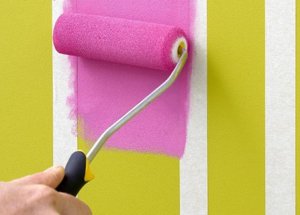The painted surfaces attract by their practicality and aesthetic appearance, and in order for the painting to be functional and most durable, one should not only strictly adhere to the painting technique and follow all the recommendations prescribed by specialists, but also use high-quality tools. Today we will talk about how to choose and use paint rollers and tampons when painting surfaces.
Content
We choose a paint roller
Paint roller It is an ideal tool for high-quality, and most importantly, fast coloring of any smooth and rough working surfaces.
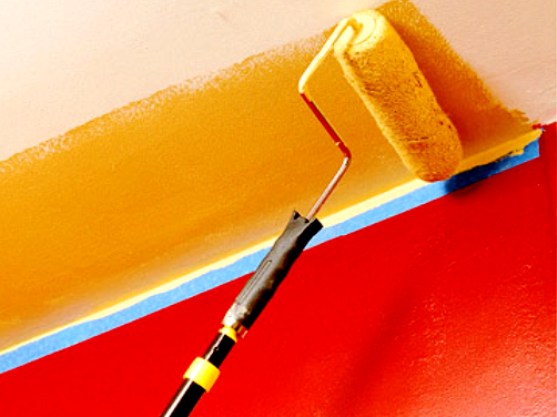
We think that most of our readers encountered this device, but we recall that its design includes a handle and a curved rod made of metal, called in the environment of professional builders by the term "bugel", on which the roller is worn.

Immediately, the roller looks like a cylinder of small dimensions, made of strong aluminum, wood or plastic, and covered with a soft coat absorbing the dye composition, and then rolls it onto the surface to be treated. Despite the elementary technology of work, ease of maintenance and a very long service life with careful use, one can not help but note the only drawback with which the tool has: narrow, small surfaces are incredibly difficult to color paint with a roller. In this case you will have to stock up a tool of different size or paint brush.

Classification of rollers
Depending on the purpose of the roller for coloring can be:
- made of natural fiber - when using oil and alkyd paint;
- of synthetic fiber - when using latex.
There is another category inexpensive roller of foam plastic, but they are practically not adapted for operations with oil and water-based coloring compounds, since they can leave bubbles, and foam often wrinkles after washing with water.
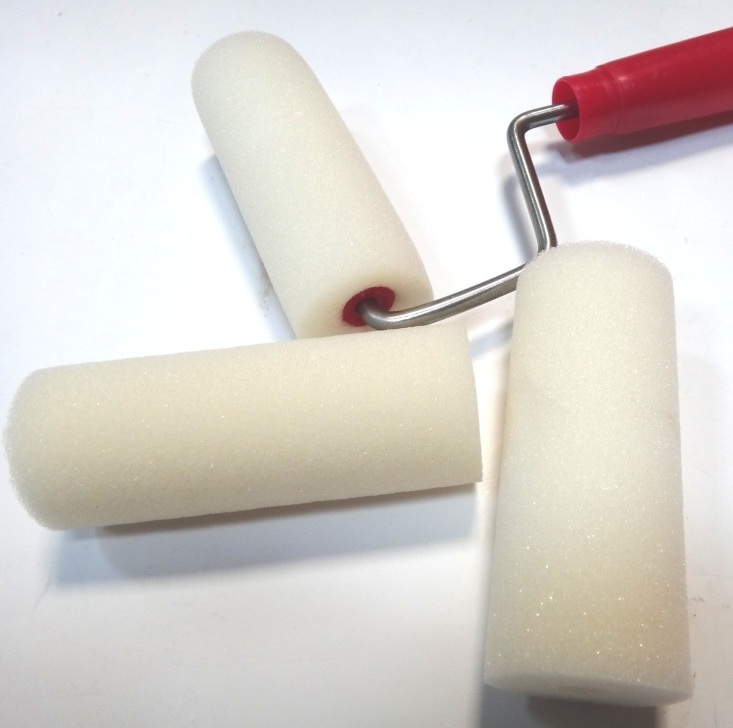
At the same time, their cheapness determines the possibility for single use with such compounds as varnish or bitumen paint, which are very difficult to wash off.
Depending on the length of the pile, paint rollers are:
- short-haired - for better coloring of smooth and smooth surfaces;
- with a long pile - for high-quality dyeing of surfaces rough or textured.

So, for example, for painting dry plaster, plastic, wooden or metal surfaces, it is better to use a roller with a pile length up to 5 mm.
If it is necessary to work with plaster rough, porous concrete surfaces and untreated forest massif, then it is more advisable to use a roller with a pile length up to 20 mm, but brick, traditional concrete blocks and pronounced textured plaster are successfully painted with a paint roller with pile up to 30 mm.
Depending on the scope of use, rollers are:
- angular, designed to quickly and accurately stain in the corners of the surface;
- radiator, used for perfect coloring of the rear surfaces of batteries and radiators. This model is a comfortable, thin roller, equipped with an elongated wire handle.
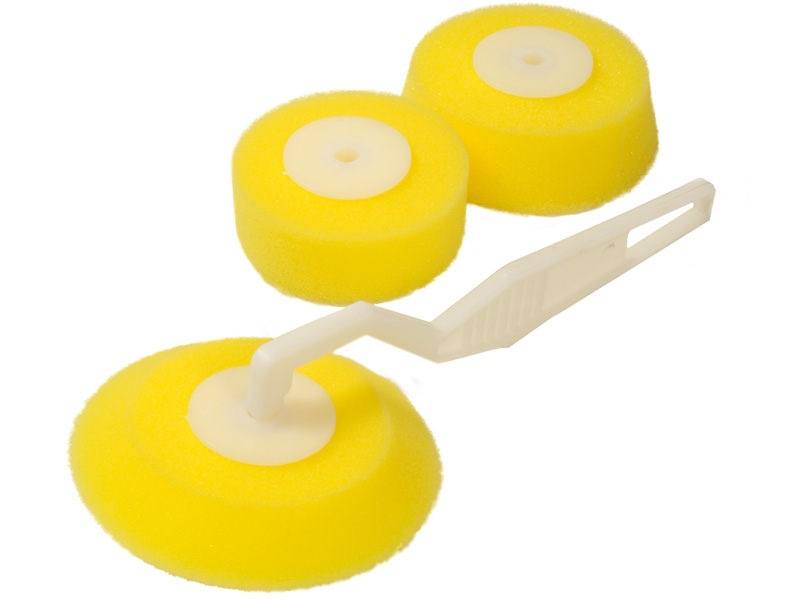
Faced with the problem of choosing the most suitable tool, it should be remembered that the rollers, and manufactured by domestic manufacturers, have a special marking consisting of three letters, but not one of those that you probably thought about. So, the first letter B indicates that you have a roller in front of you, the second one refers to the material of making a fur coat and the third indicates the scope of use. In total there are 4 groups of paint rollers, the first 3 of which are mainly used for painting with paint and varnish compositions.
Here is an example of marking of rollers:
- VM - rollers with fur coating;
- ВМП - fur rollers for painting of a surface of a floor;
- VMU - fur rollers for coloring angular zones;
- VP - rollers made of foam rubber for staining with water-adhesive compositions.
Selecting the necessary paint tool, in addition to the material of fur coat, it should be evaluated for its compatibility with the coloring compounds that will be used in the course of the events. The stability of the coat is indicated by the number of strips applied to it: the more the number of strips, the more resistant it is to aggressive substances. In addition, by the number of strips you can understand the replacement of the fur coat and the method of manufacturing it. For example, if you find stripes on the paint roller running along, it means that the fur coat can be easily and quickly replaced, because it is sewn. But if the strips are arranged obliquely or in some cases transversely, this indicates the impossibility of replacement due to its gluing.
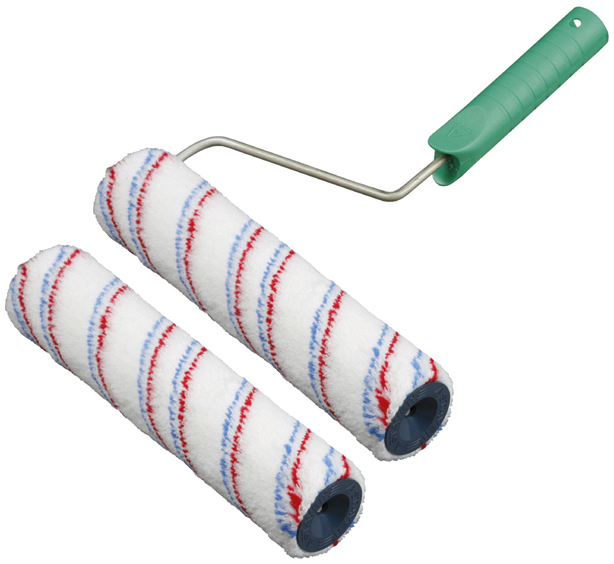
Cross-stitched fur coats are traditionally equipped with facade and professional paint tools, characterized by impeccable functionality, easy replacement and a long service life.
If you have to create an original textured surface, it is better to use a figured roller, designed specifically to work with a specific type of texture coating.
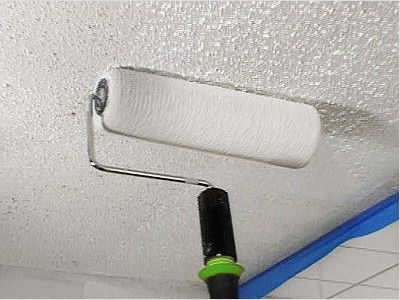
And, finally, 100% confidence in the quality of the painting tool can give the presence of an international quality certificate ISO9001.
Depending on the design features of the handles, the rollers can be:
- shortened, up to 30 cm;
- average, from 35 to 45 cm;
- elongated, more than 50 cm.
If you are facing the task of staining a far-away object, then it is more reasonable to buy an extension arm, the length of which can reach 4 meters. Do not forget to pay attention to the quality of the finished instrument, which is determined on the basis of whether the lint remains on the surface or it is perfectly smooth, solid and without any slightest defects. To make sure of the quality, tightly squeeze the rollers, observe how much the roller needs time to take its original shape.
Painting experts: tampons and their types
Tampons are another popular tool for high-quality dyeing of angled, butt and hard-to-reach areas with a clear lack of practical experience. They are usually made of mohair or foam polymer and used for painting with oil, alkyd and latex paints.
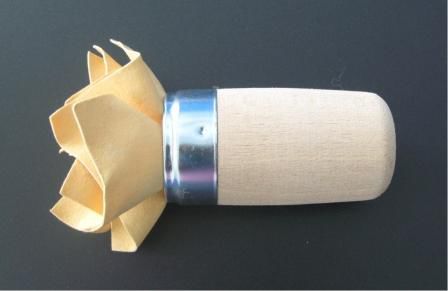
However, not all lovers of the painting business experience pleasure, working with tampons, but it costs a little to adapt, and you will forget about some inconveniences and the draining of unnecessarily typed paint from the instrument.

When choosing paint tampons, one should remember about their classification:
- standard swabs, having a rectangular shape and covered with woolen, fleecy material. Equipped with an arcuate handle;
- corner tampons, allowing to apply the color composition on 2 sides of the corner simultaneously. After staining the corner areas, it is recommended to use a standard tampon further;
- a tampon window, beautifully painting a narrow coloring surface and having guides from a durable plastic to prevent unwanted paint from entering the glass.
You can learn how to work with a paint tampon from a video on youtube.


